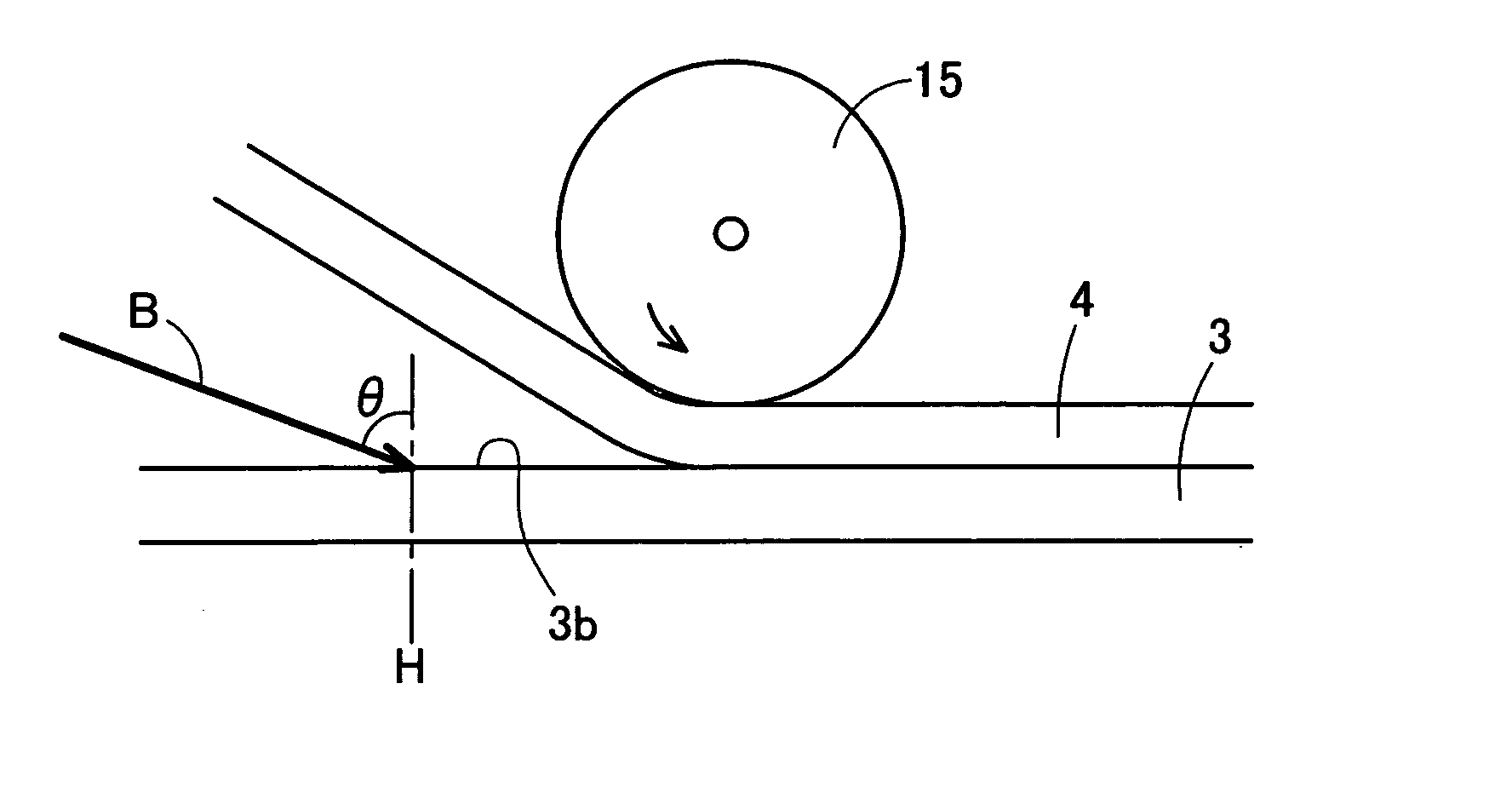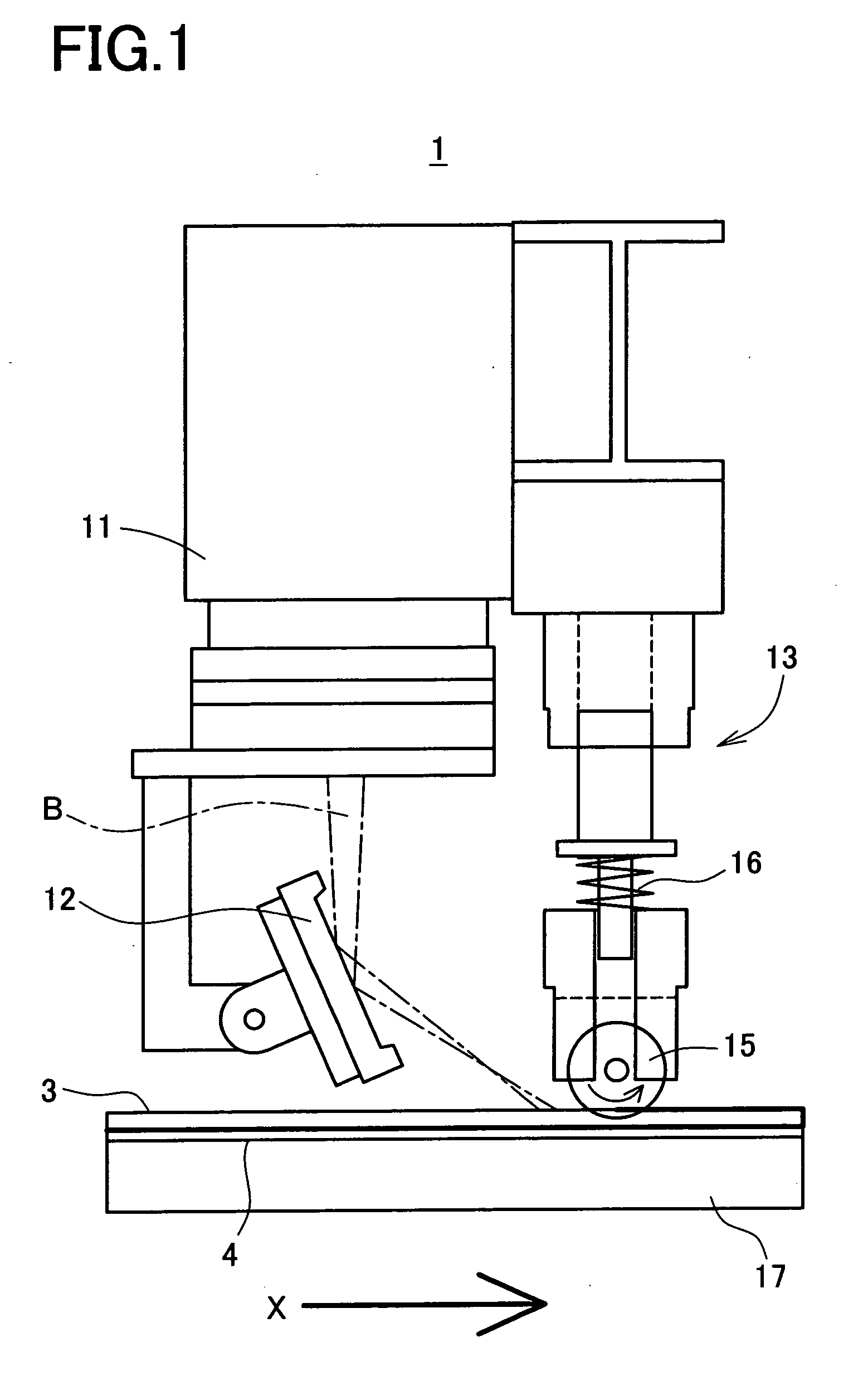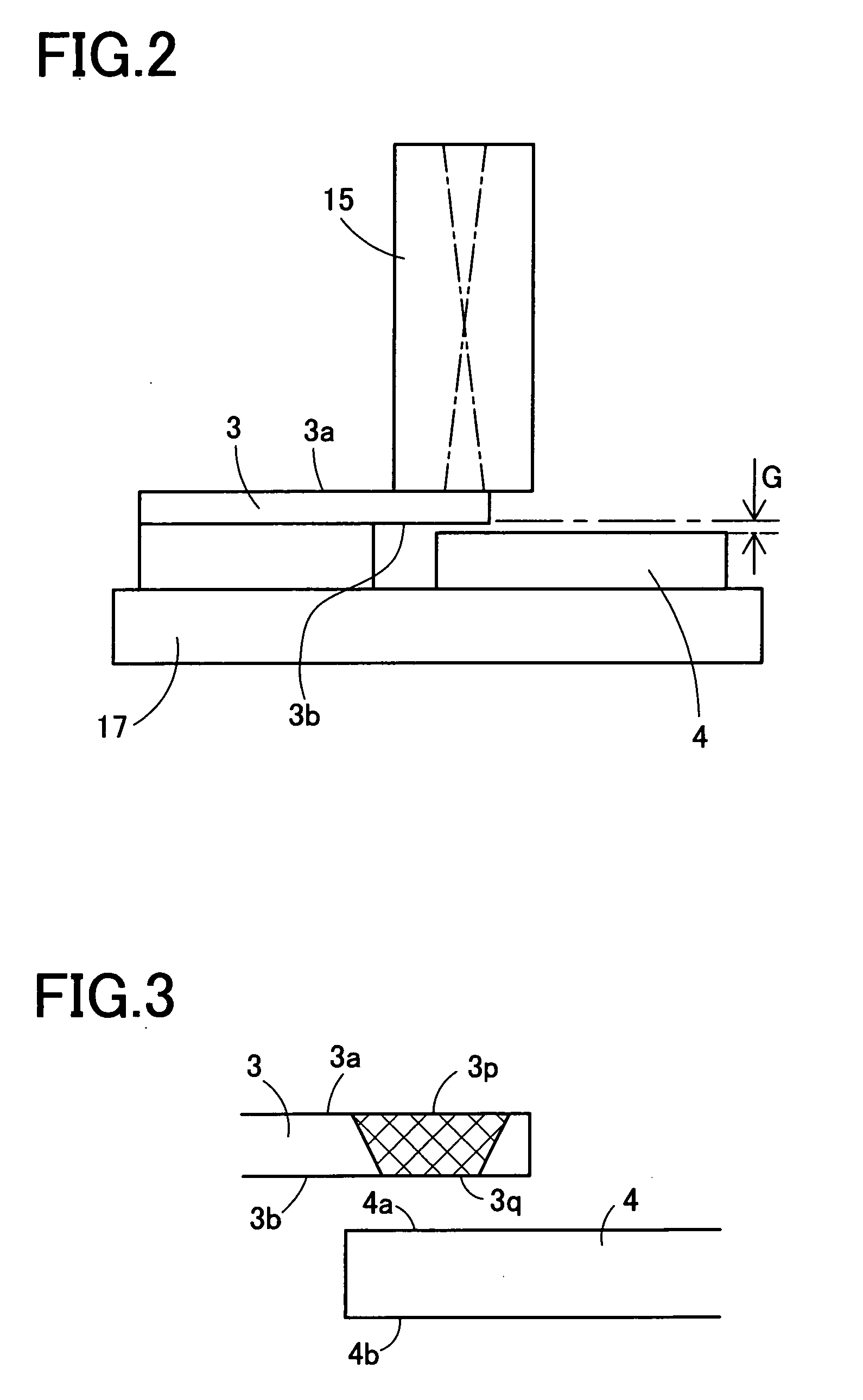Laser roll joining method for dissimilar metals and laser roll joining apparatus
- Summary
- Abstract
- Description
- Claims
- Application Information
AI Technical Summary
Benefits of technology
Problems solved by technology
Method used
Image
Examples
Embodiment Construction
[0059] Next, an embodiment of a laser roll joining process and a laser roll joining equipment for dissimilar metals of the present invention will be described with reference to the drawings. The laser roll joining process of this embodiment and the laser roll joining equipment for executing this are constructed based on the laser roll pressure welding proposed by this inventor described in the non-patent documents 6, 7. The different type metal sheets to be jointed together are carbon steel sheet and aluminum alloy sheet and more specifically, SPCC steel (cold rolled material of low carbon steel), which is a structural material used for automobile and A5052-0 alloy (2.5 wt % Mg), which is ductile aluminum alloy. The thickness of the SPCC steel sheet 3 is 0.5 mm and the thickness of the aluminum alloy sheet 4 is 1 mm.
[0060]FIG. 1 is a schematic structure diagram showing the joining execution major portions of the laser roll joining equipment for executing the laser roll joining proc...
PUM
| Property | Measurement | Unit |
|---|---|---|
| Length | aaaaa | aaaaa |
| Temperature | aaaaa | aaaaa |
| Angle | aaaaa | aaaaa |
Abstract
Description
Claims
Application Information
 Login to View More
Login to View More - R&D
- Intellectual Property
- Life Sciences
- Materials
- Tech Scout
- Unparalleled Data Quality
- Higher Quality Content
- 60% Fewer Hallucinations
Browse by: Latest US Patents, China's latest patents, Technical Efficacy Thesaurus, Application Domain, Technology Topic, Popular Technical Reports.
© 2025 PatSnap. All rights reserved.Legal|Privacy policy|Modern Slavery Act Transparency Statement|Sitemap|About US| Contact US: help@patsnap.com



